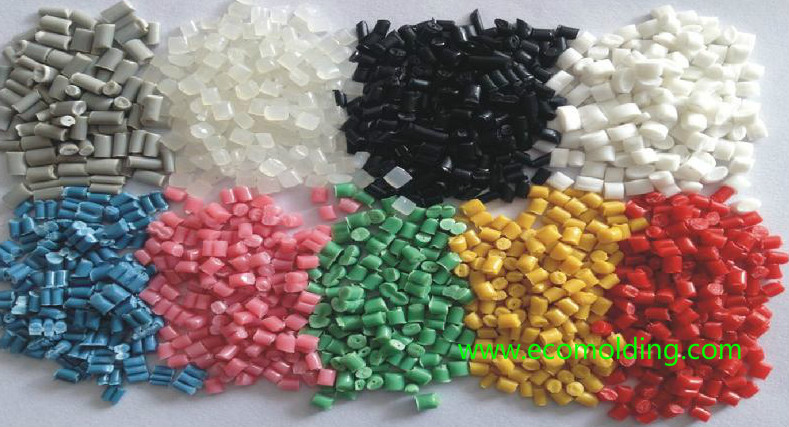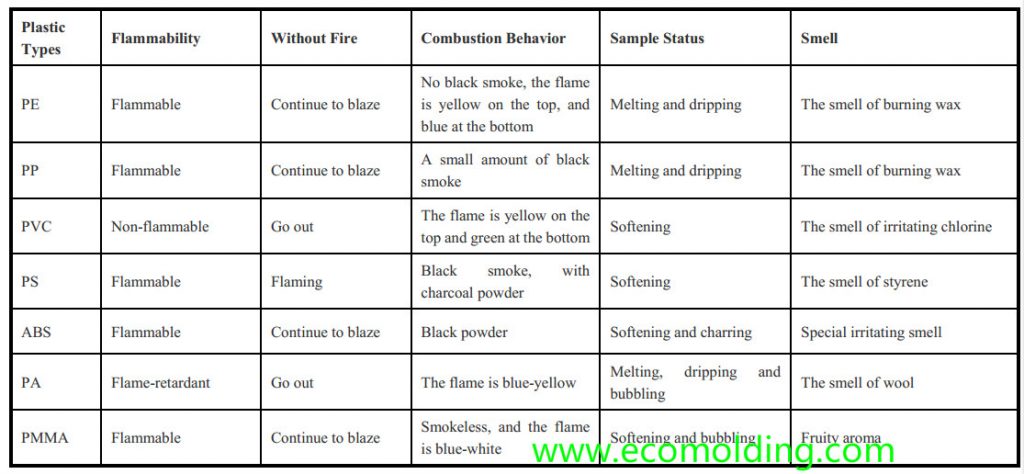1. Plastic material types identification by Appearance
It is the most common, simplest and most effective methodfor Plastic material Identification. The preliminary identification of many plastic products can be done in this way. It is to distinguish different varieties of plastics according to their appearance.

PE feels smooth, soft and tough, is extensible and bendable, with obvious marks after being scratched; MDPE and HDPE are hard, and possess great rigidity and toughness. The appearance is milky white, translucent and waxy when uncolored; it is floating in water, tasteless and odorless. The sound is low after being beaten. The commonly seen products include mulch, handbags, water pipes, oil barrels, beverage bottles and daily necessities, etc.
PP feels smooth, without marks after being scratched. It is bendable, not easy to break, and possesses great tensile strength and rigidity. When uncolored, the appearance is white, waxy and translucent. The material is floating in water, tasteless and odorless. After being beaten, the sound is loud. The commonly seen products include boxes, barrels, films, furniture, woven bags, bottle caps and car bumpers, etc.
PS feels smooth, is brittle and easy to break. The transparent appearance looks like uncolored glass; it is impact-resistant and dull, sinks in water, tasteless and odorless. After being beaten, there is a metallic sound when flicked with a finger nail. The commonly seen products include stationery, cups, food containers, home appliance casings and electrical accessories, etc.
PVC feels soft, and the product is soft and tough, and feels sticky. The hardness of a hard product is higher than that of the low-density polyethylene, but lower than polypropylene. Bending marks tend to occur. The appearance is yellowish, translucent and glossy. The transparency is higher than that of polyethylene and polypropylene, but lower than that of polystyrene. The product varies depending on the application of plasticizer and filler, and some are opaque. The commonly seen products include soles, toys, wire sheaths, doors and windows, stationery and packaging containers, etc.
ABS is a material that feels hard. It is tough, hard, rigid and not easy to break. The appearance is milky white or beige, amorphous, opaque and dull. It is sinking in water, tasteless and odorless. The sound is crisp after being beaten. Commonly seen products include home appliance casings, mechanical parts, helmets and suitcases, etc.
PA6 and PA66 feel hard and hot, and will not break when touched lightly. The appearance is milky white and gelatinous. They are sinking in the water, tasteless and odorless. The sound is low after being beaten. Commonly seen products include mechanical parts, carpets and fishing nets, etc.
PC has a metallic feel, is hard, resistant to bending / impact, and tough. With regard to appearance, it is a white, light yellow or amber crystalline powder. As a transparent solid, the product is nearly colorless, tasteless and odorless. The sound is loud after being beaten. Commonly seen products include door / window glass, auto parts, mechanical parts, optical discs and safety shields, etc.
2. Plastic material types Identification by Burning

3. Plastic material Identification by Density
Plastic material identification by density, AKA gravity dressing, is also a simple method to identify different types of plastics. Different varieties of plastics have different densities. So, difference in density can be leveraged to identify the types of plastics on basis of their floating / sinking behaviors in the water. However, this method is seldomly used alone, but is always applied in conjunction with other methods to accurately identify plastic types.
Using the floating method, PP and PE can be separated from PET with water; PP, PE, PS, PA and ABS can be identified with saturated brine; PP, PE, PS, PA, ABS and PC can be identified with saturated aqueous solution of calcium chloride. Only PVC, as its density is similar to that of PET, it is not possible to separate it from PET by the floating method.
